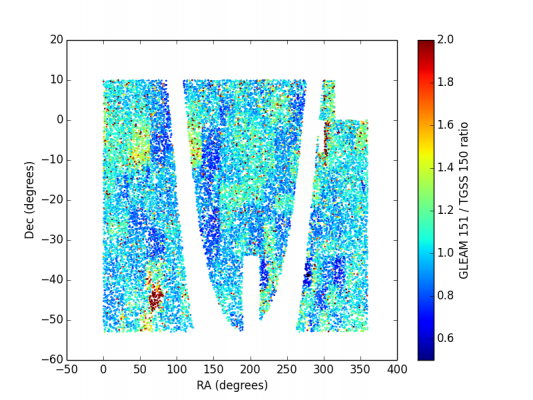Known problems and fixes
Here we list the known problems in the various data releases, and what was done to fix them.
Alternative Data Release 2
In preparation.
Alternative Data Release 1
- There are holes in the sky coverage in the northern hemisphere.
This is from one observing session where all images were really bad. Investigation did not yield any solution. We will propose to reobserve this area in GMRT cycle 31. - Some areas have a systematically low flux, sometimes even 40-50 percent.
This is partly because of bad data from a few observing sessions, affecting a few percent of the survey area (but also see below). We will propose to reobserve this area in GMRT cycle 31. - 3C 184.1 (07 43 01.4 +80 26 26) appears to have an additional lobe component on the south.
This is due to a local calibration error in one of two pointing images that were mosaicked together at this location (thanks Francesco). The wrong image will be updated in ADR2. - About 5-10 percent of the survey area has systematic flux deviations of larger than 10 percent.
This was uncovered by comparing fluxes directly against MWA GLEAM (thanks Joe, Jack, Tara, Natasha, and others), and by checking the average spectral index between TGSS and NVSS (thanks Francesco). Investigation has revealed several possible causes, including persistent antenna delay jumps, ALC gain errors due to strong RFI, and incomplete models for weaker calibrators (3C286). No simple fix is available for the ADR1 data products. We have modified the data processing pipeline to overcome most of these issues, and testing is still underway. The TGSS data products will undergo a major revision, and will become available as part of the second Alternative Data Release (ADR2). - 3C 270.1 (12 20 33.9 +33 43 12) appears to have a second component 2' to the north.
This is a sidelobe due to dynamic range issues (thanks Francesco). The image will be corrected in ADR2.
